Anatomy > STUDY GUIDE > West Coast University ANAT 260 Physiology PGA 1 Study Guide for Chapters 1-3. (All)
West Coast University ANAT 260 Physiology PGA 1 Study Guide for Chapters 1-3.
Document Content and Description Below
PHYSIOLOGY: PGA 1 CHAPTER 1: 1. What is Physiology and how is it different from anatomy? Explain the 4 themes of physiology (excluding Homeostasis). Physiology is the study of the normal func... tions of a living organism, including component parts such as chemical and physical processes. (knowledge of nature). Anatomy deals with the structure of the human body, animals, and other living things. THEMES OF PHYSIOLOGY: Structure and function across all levels of organization. (closely related to each other subdivided into molecular interactions and compartmentation) energy transfer, storage, and use (living organisms need energy) information flow (coordinates body functions), storage, and use within single organisms and within a species of organism evolution 2. Fully explain what Homeostasis is, including the definition of negative feedback and the three components of all control systems. Use the thermostat example to explain homeostasis. Now use a physiological example and thoroughly explain how the body accomplishes homeostasis (blood sugar control, BP control, or thyroid hormone balance) Homeostasis is the maintenance of relatively constant internal environment. Negative feedback loops stabilize the regulated variable, aiding the system in maintaining homeostasis. A control system have three components: (1) an input signal, (2) a controller, or integrating center that integrates incoming information and initiates a response. (3) an output signal, creates a response. In the example of the thermostat, it is much like our bodies, during negative feedback loop homeostasis. Much like the thermostat, our bodies have set points, that when out of range, initiates our sensor (thermometer). For example, when our own body temperature higher hits higher than 100 ° F , (bodys set point is around 98.6 ° F) information is sent through an input signal (wire) to the integrating center (control box) to begin the process of trying to reduce the fever, or in the case of the thermostat, decide whether temperature needs to increase of decrease to reach the desired set point. In regulation of blood glucose different hormones are active, keeping glucose levels at a set point 0. Insulin, the most important hormone is released from the pancreas, and is absorbed by the liver when released after eating. When insulin is not being produced the liver converts glycogen to glucose and the blood glucose level remains constant, keeping the balance of glucose levels. 3. Define a positive feedback loop, and explain how positive feedback loops are NOT homeostatic. Now use a physiological example to support your answer above (the three main positive feedback loops in the body are oxytocin and childbirth, fever, and blood clotting). [Show More]
Last updated: 2 years ago
Preview 1 out of 14 pages

Buy this document to get the full access instantly
Instant Download Access after purchase
Buy NowInstant download
We Accept:

Reviews( 0 )
$12.00
Can't find what you want? Try our AI powered Search
Document information
Connected school, study & course
About the document
Uploaded On
Jun 08, 2021
Number of pages
14
Written in
Additional information
This document has been written for:
Uploaded
Jun 08, 2021
Downloads
0
Views
117


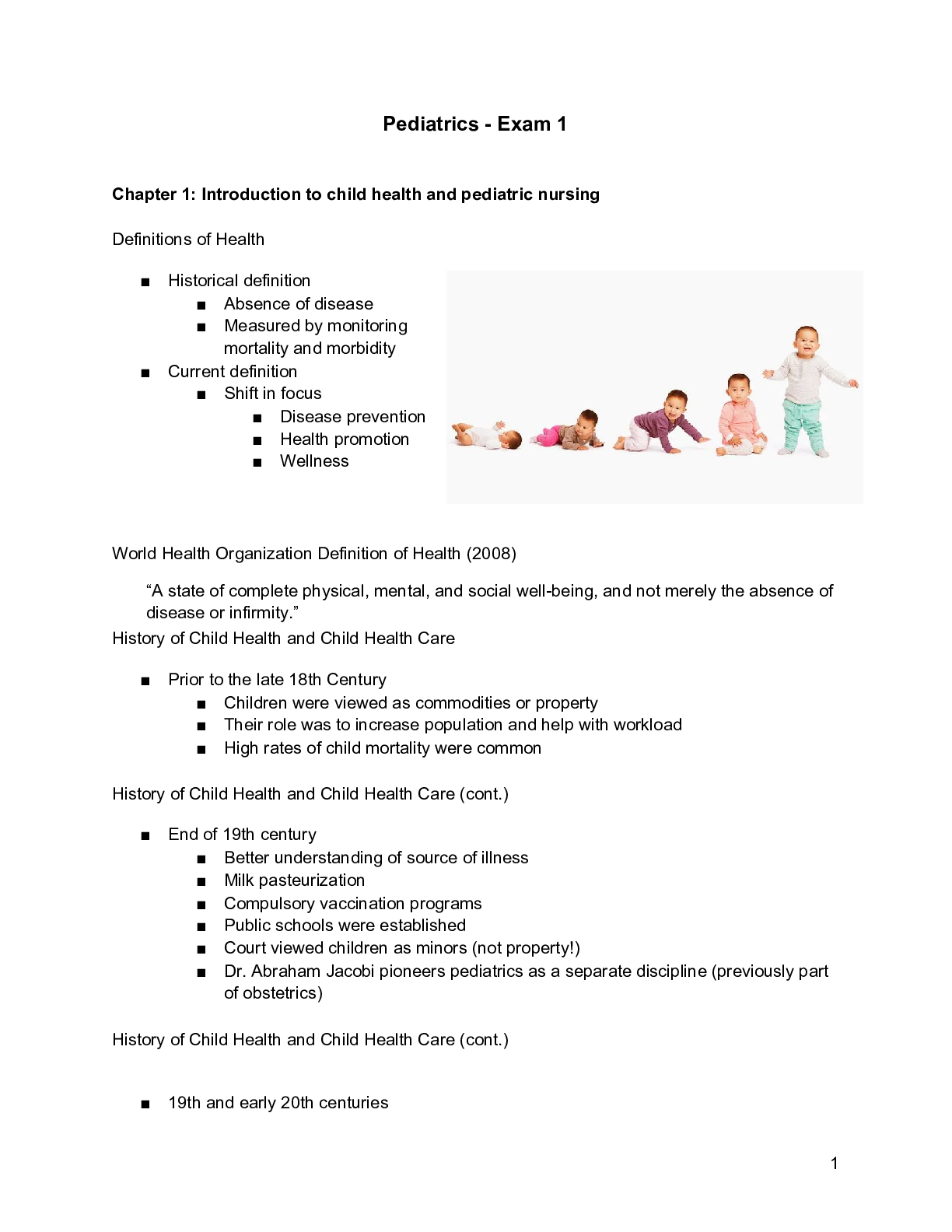
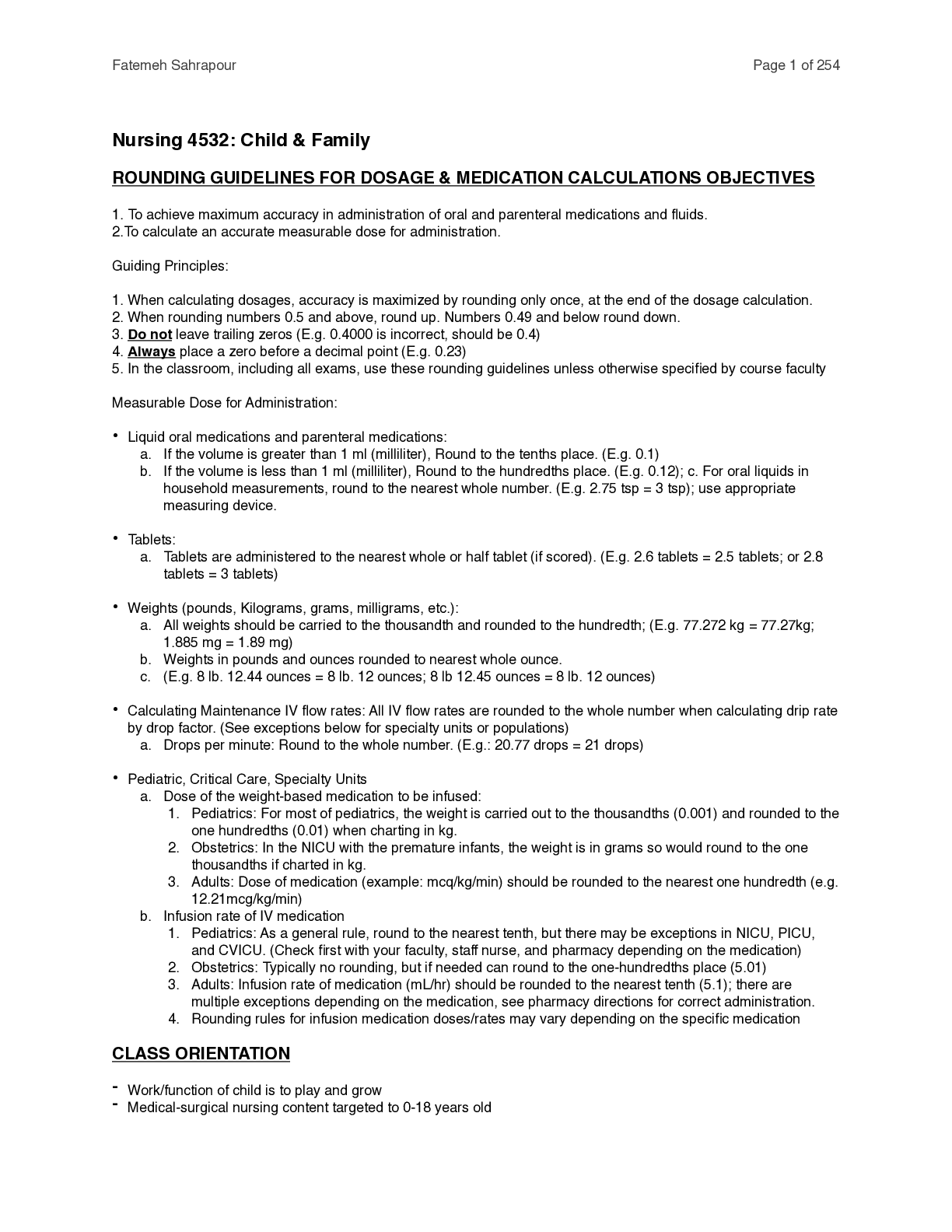


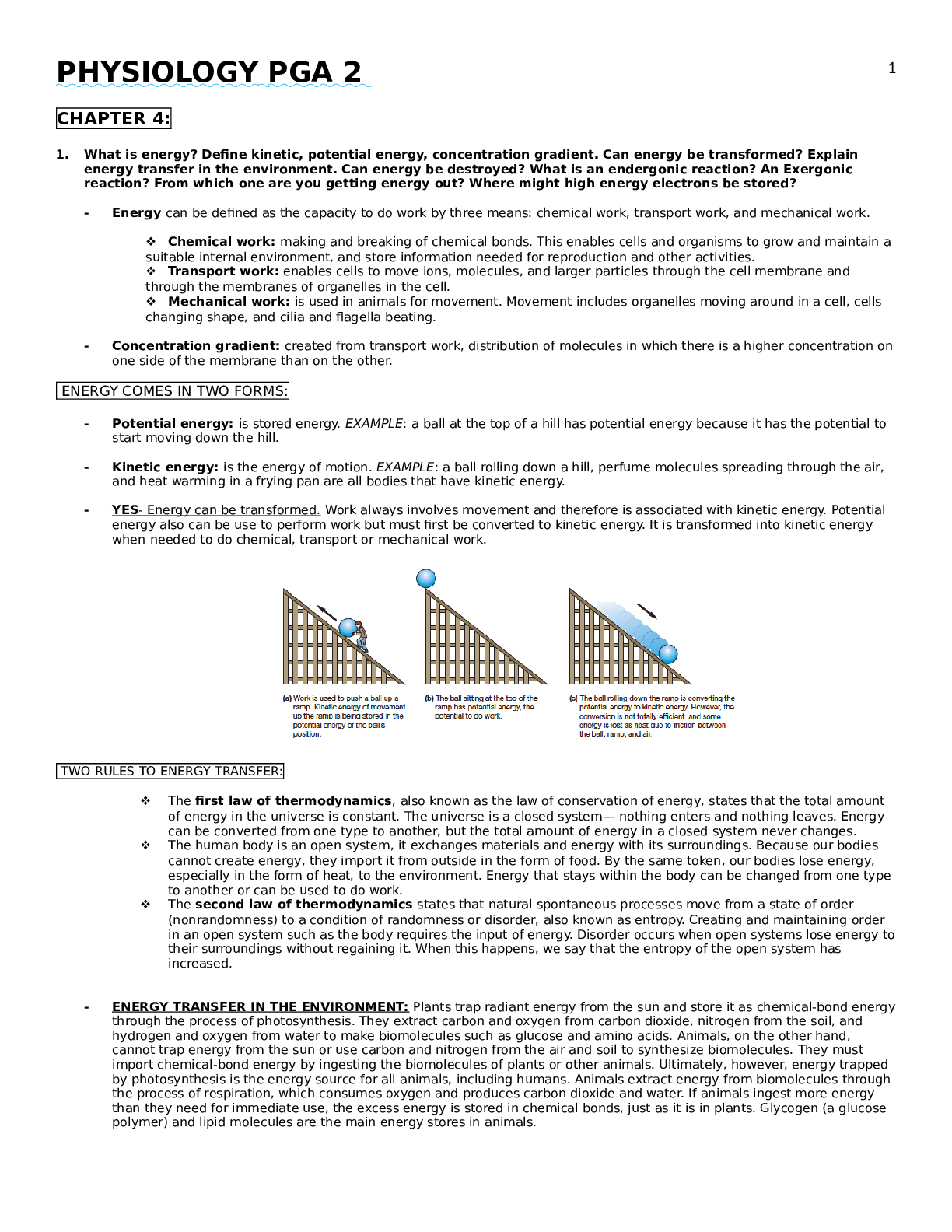
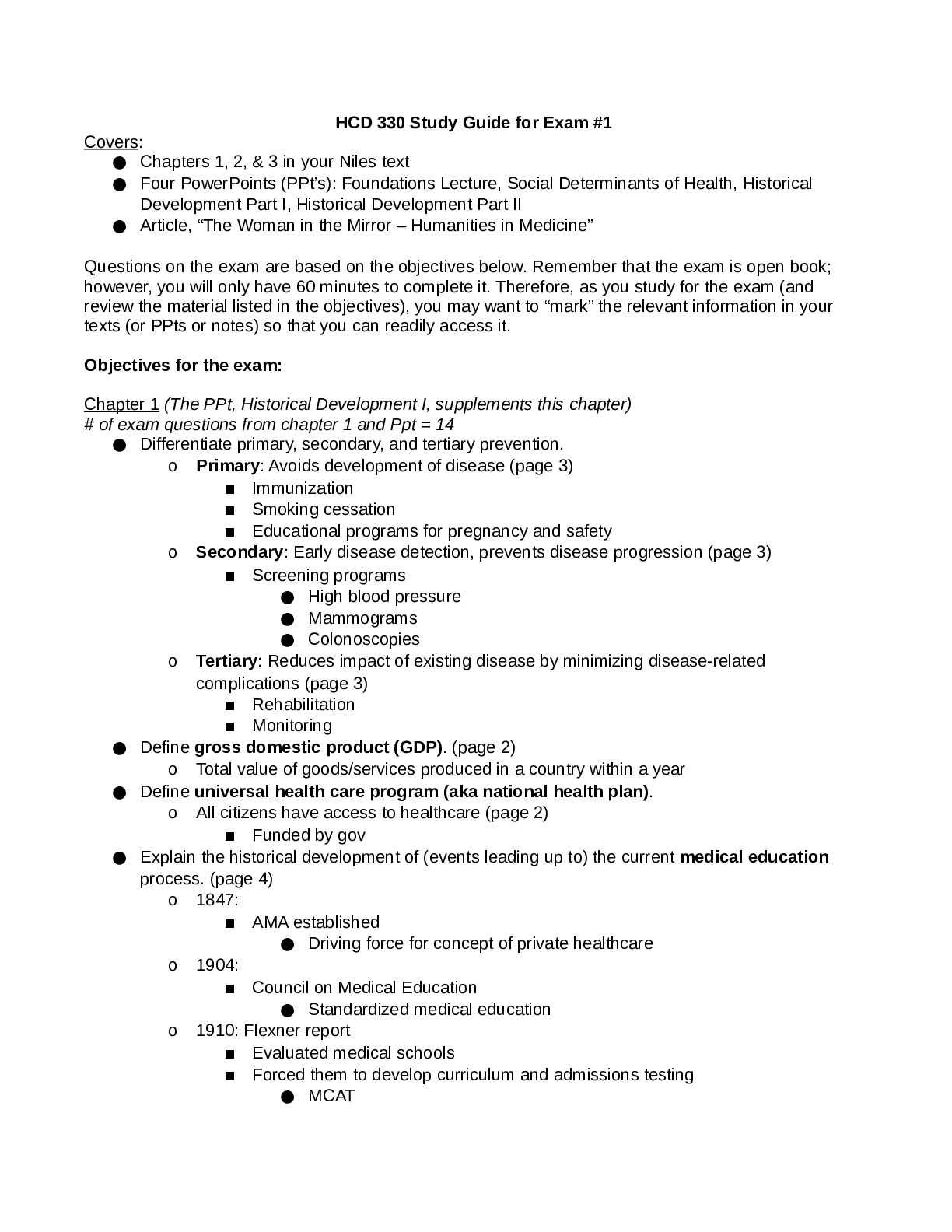

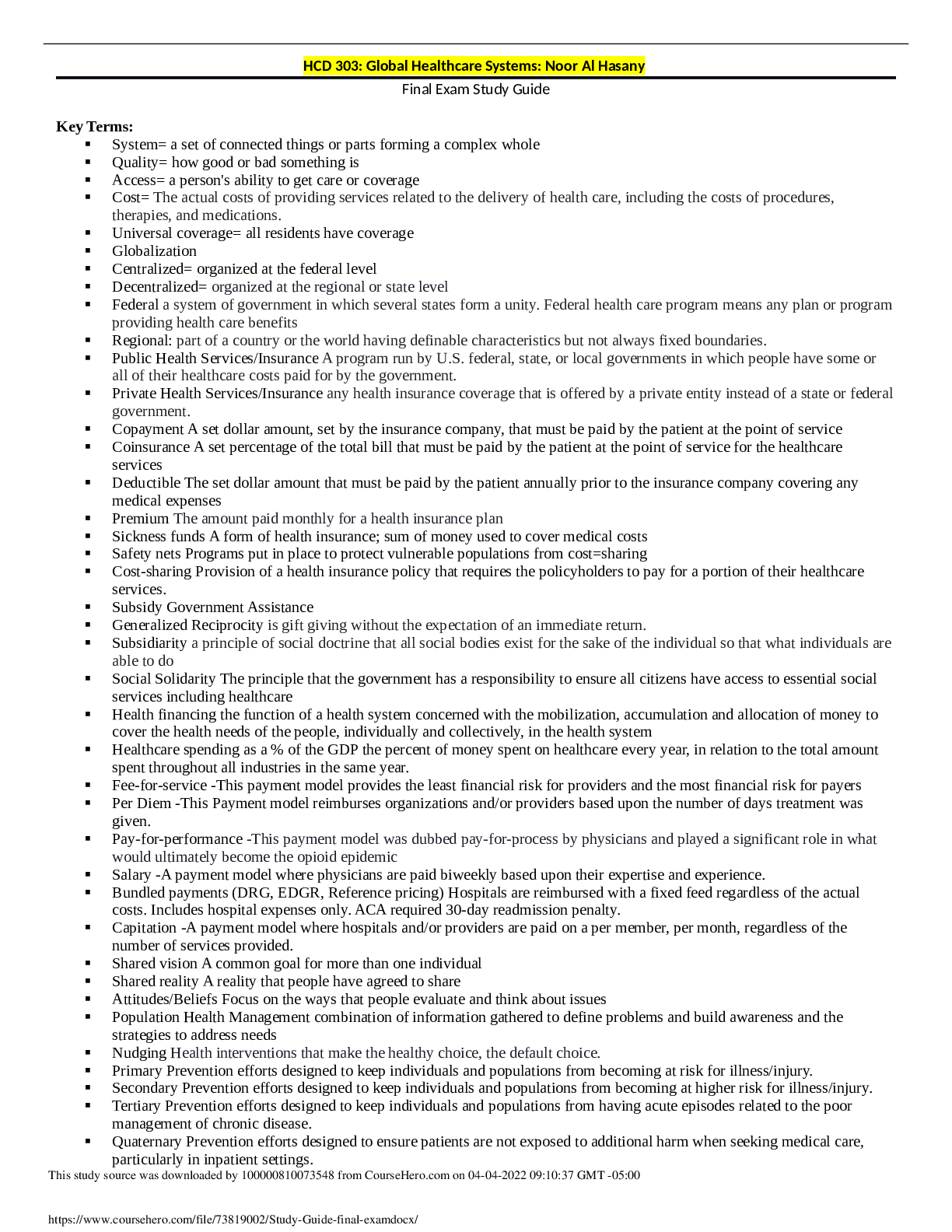


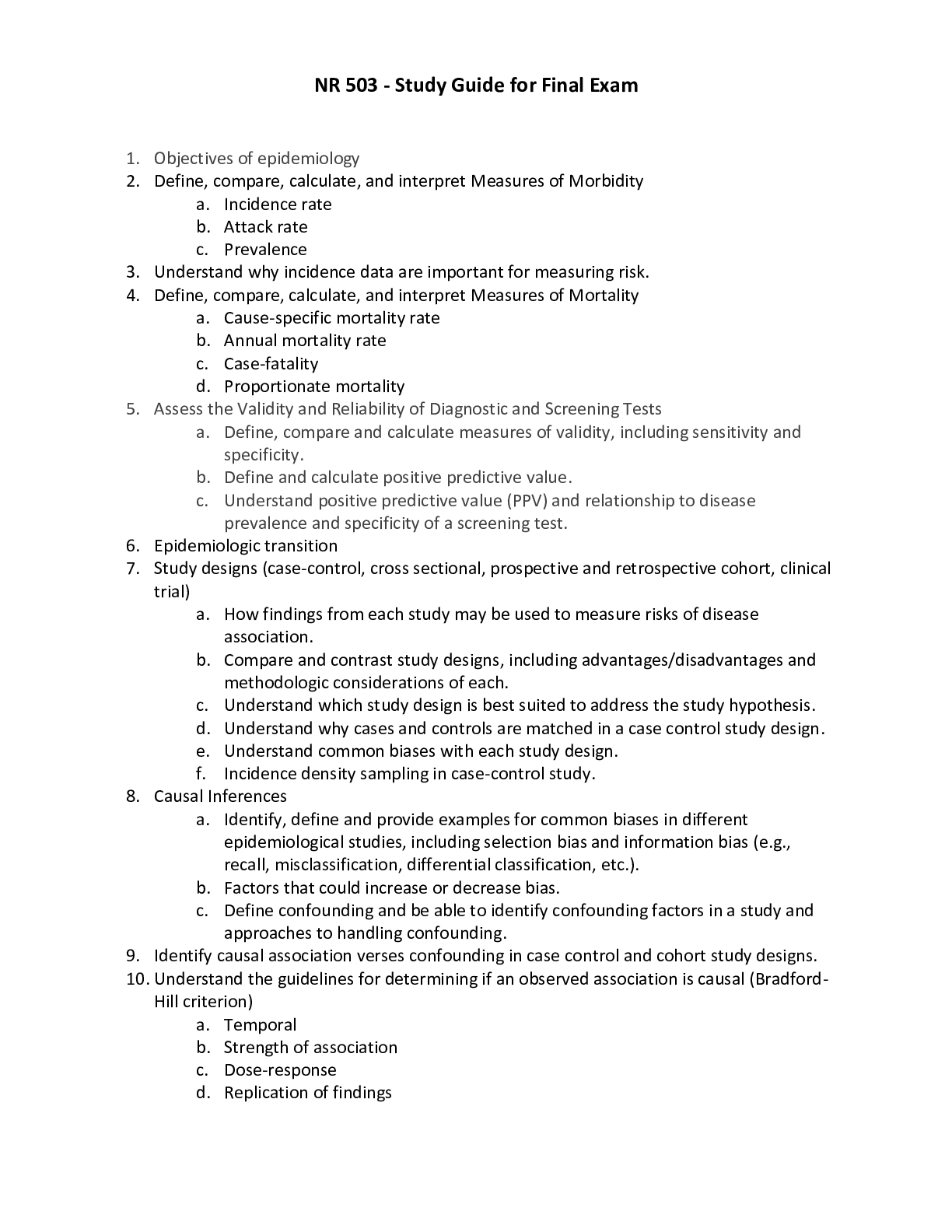

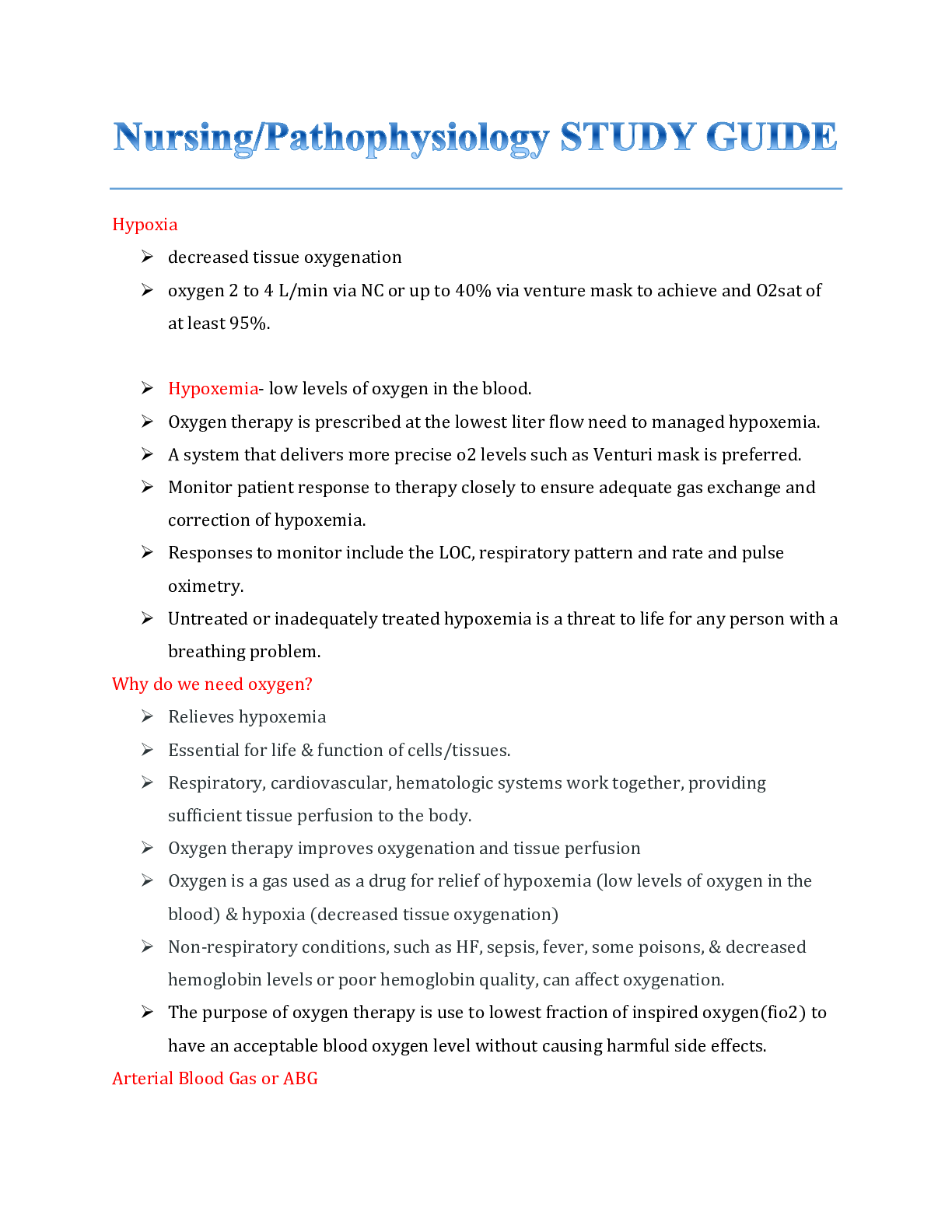




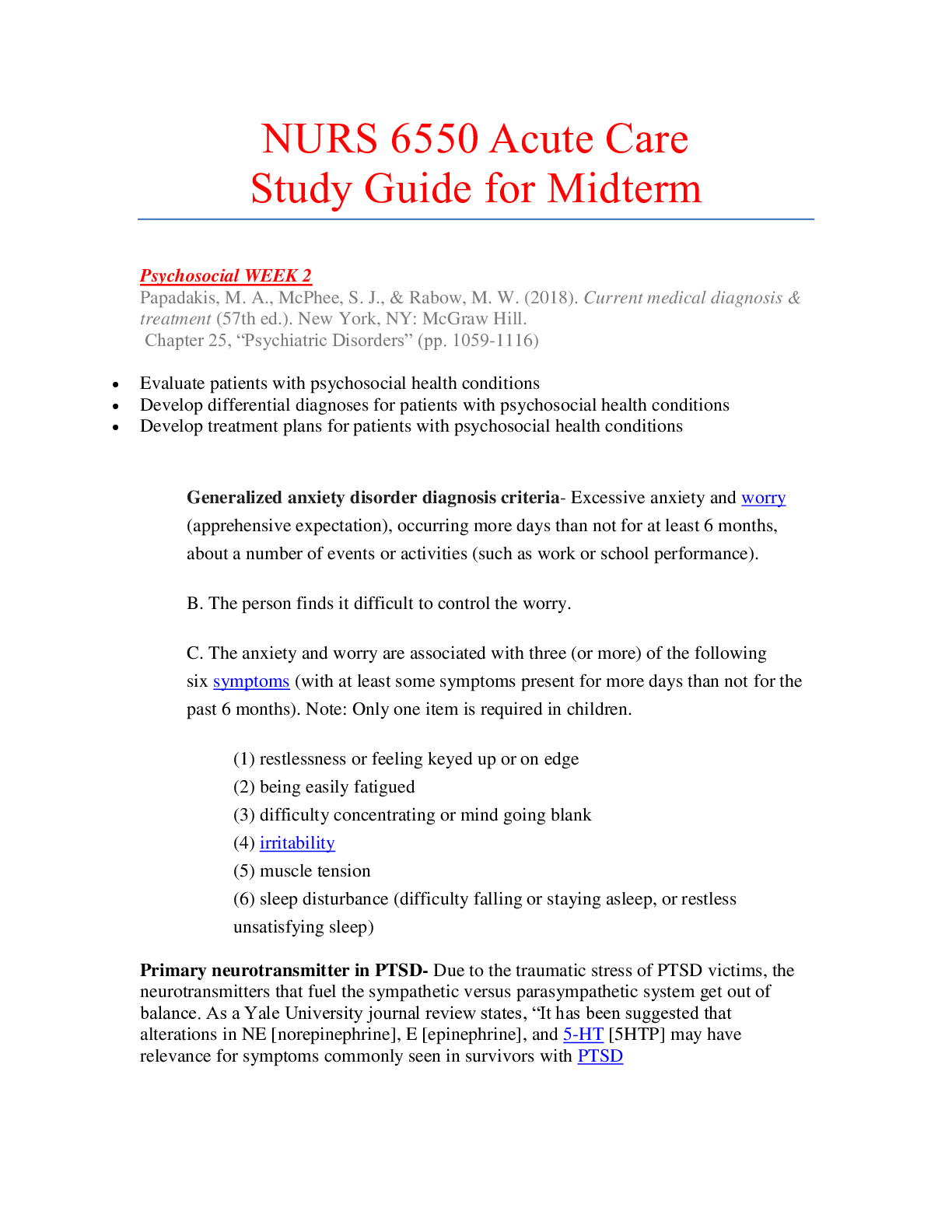

.png)
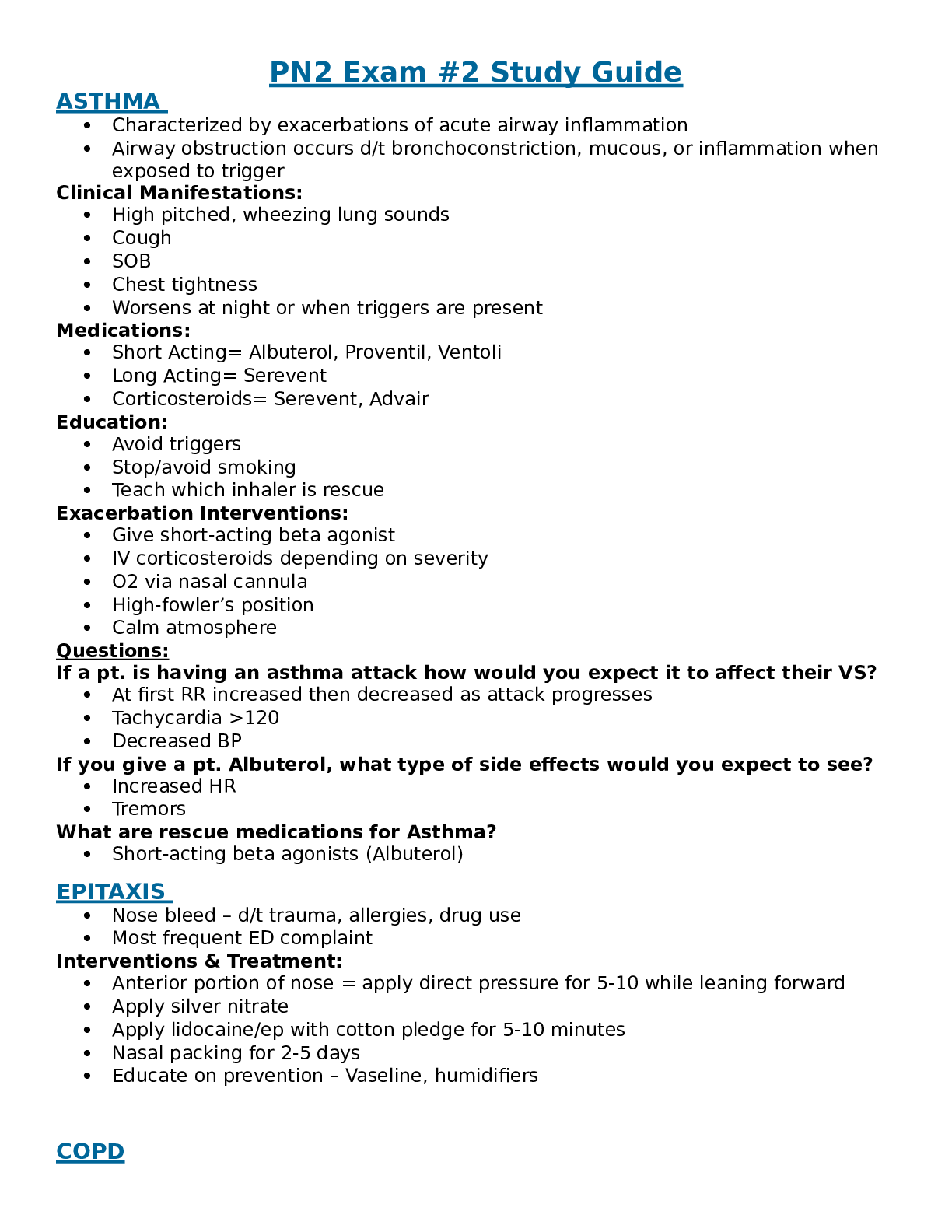
.png)

